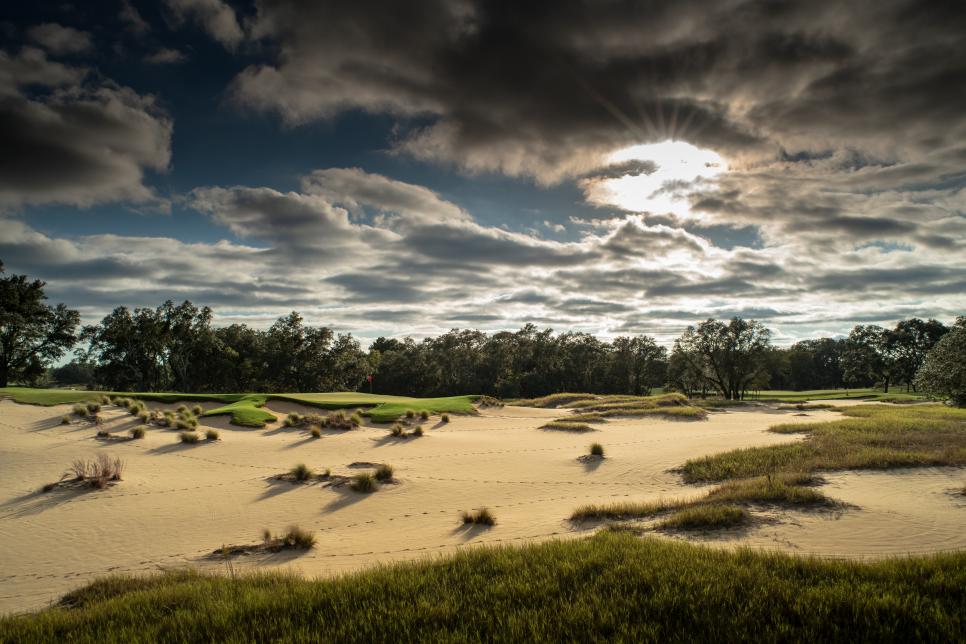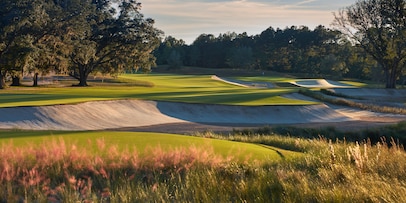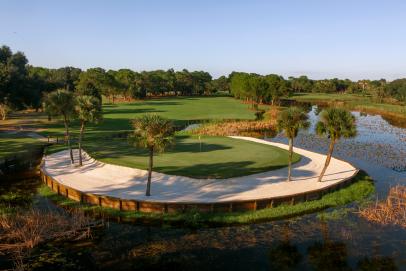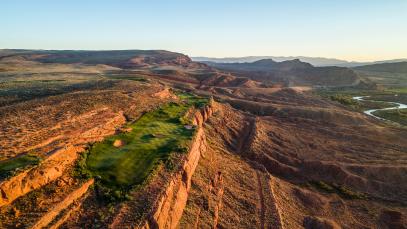Eye on Design
7 things course architects think about that you probably don't

Dom Furore
Most golfers believe course architects spend their time at drafting boards devising elaborate strategies and vexing ways to thwart a good score. Certainly, that’s an important part of the job, the fun part.
Smart hole strategies and architectural compositions, however, are secondary to the design process. Every architect wants their holes to be challenging, entertaining and pretty, but these are the things that happen on the surface, and only after other critical elements have been put in place.
Before designers can dazzle us with bunkers, green contours and views, there are a host of other fundamentals they must consider. Here are seven things that architects grind over that most of us don’t even notice—unless they get it wrong.
1. Drainage
In golf course architecture there are only three hard and fast rules: drainage, drainage and drainage. Even designers in the early 1900s understood that if a golf course didn’t drain well, it wouldn’t be much of a course.
Courses that are built on sand typically don’t need much added drainage because the water percolates straight down. Nearly everywhere else, water must be captured and moved. To save on cost and the unsightliness of drains and larger catch basins, architects try to find areas to sheet water naturally off slopes and away from the golf, but invariably some degree of drainage is necessary, especially in the low areas of fairways and in hollows around greens.
If a course is to play dry and firm—to have the ideal conditions that Alister MacKenzie called “rabbity” turf—drains are a fact of life. Good design can minimize the size of catch basins and where they come into play, but even the greatest non-sand-based golf courses need to engineer places for the water to disappear.
2. Trees

Very few golf courses are completely bereft of trees—everywhere else, they must be managed. That means sometimes they need to be cut down.
Architects and superintendents don’t hate trees. On the contrary. But they see them for what they are: competitors for light, water and other resources. When overgrown or planted too near tees, greens and fairways, they shade grass and make the growing of quality golf turf nearly impossible.
That’s why when architects embark on course renovations, the removal and thinning out of trees (which were often overplanted in previous decades) is one of the top items on the to-do list, even though it’s one of the most contentious parts of the process. Golf, however, is played on grass, and that should be the priority.
3. Green speeds
Golfers love fast, pure greens, and superintendents, when given proper resources, have become masterful of delivering lightning-quick playing surfaces. Greens running at 12 or 13 on the Stimpmeter used to be the domain of only a few select clubs nationally, but now almost every high-end club in every city can hit these numbers. Fast greens have become something of an arms race.

Getty Images
While greens running at 13 might give golfers the feeling they’re playing at Oakmont (above) or Augusta National, they have serious architectural consequences. When architects know that the greens they’re designing might be kept as speeds of 12 or above, it limits the amount of contour they can create. At that number, the pinnable parts of greens cannot be sloped at much more that 2 percent, and any interesting movements must take a back seat to these hole locations.
Ultra-fast putting surfaces are a testament to turf technology, but they take an element of creativity away from architects and have forced many clubs, especially older clubs, to modify and soften their previously enigmatic contours.
4. Cart paths
Depending on the point of view, cart paths are either a necessity or a luxury. Either way, they are something architects have to deal with. Paved paths may seem uncomplicated but routing them through an entire golf course in a way that’s unobtrusive can require sophisticated problem-solving. This is especially the case on difficult properties where one half of the hole might be out of play due to a water hazard, wetland, ridge or steep incline.

Hoot Design Company
Architects don’t like seeing concrete next to their holes (nor do golfers, especially a path cutting across a fairway). Some, especially those used to working with big budgets, will actually go out of their way to hide paths from view of the fairways and greens, but this adds additional cost (above the already expensive price of constructing them in the first place) and requires added landscaping and hole shaping.
5. Utilities
As with cart paths, discerning designers do their best to hide distracting objects like utility and irrigation control boxes, pump houses and even distant buildings or power lines. To do so also requires creative solutions and additional financing.

Richard Heathcote
Screening off-course scenery might entail planting mature trees or orienting holes toward a different perspective. Utility boxes can be moved away from lines of play and lines of sight, or even hidden amid flora or camouflaged as rocks in a desert setting. When you begin noticing these invasive objects, you’ll begin to develop appreciation for architects who have gone out of their way to obscure them.
6. Horizon lines
Artistic architects consider everything the golfer sees when hitting golf shots. Bunkers and other hazards are scene stealers, but more subtle things like grass color and textures, distant focal points and how certain shapes can draw the eye horizontally toward desired features also add to the picture.

Creative shaping and use of shadows can have consequential effects on the shots being played. Pete Dye was a master at stacking horizontal lines—the surface of a lake, the arc of a long waste bunker, the floor of a bunker, its top edge, and the platform of a fairway or putting surface—to make hazards seem more intimidating or create compelling hole compositions. Other architects like Gil Hanse often give prominence to greens by clearing what’s behind and creating “infinity” rear edges. This effect can add drama to the contours or show off a high point in the putting surface, confuse depth perception or remove obvious aiming points.
7. Forward tees
After decades of courses trying to boost their championship bona fides by pumping distance into their designs, more and more are becoming interested in adding forward tees for playability and flexibility. Unlike building new back tees that are usually located in rear “dead” spaces that don’t get much traffic (assuming there is land available), adding forward tees poses different challenges.
Architects want to set up meaningful angles and distances when constructing forward tees, but often that places them awkwardly in the line of play or near the driving zone of the rear sets of tees. Often the fairway bunkering patterns, designed for drives off longer tees, don’t make sense strategically from shorter distances. The ideal forward tee might disrupt the line of sight or composition of the hole, and then there’s the problem of getting cart paths out to them. Like so many other architectural elements, a seemingly simple and well-intentioned project suddenly becomes a logistical spiderweb.



